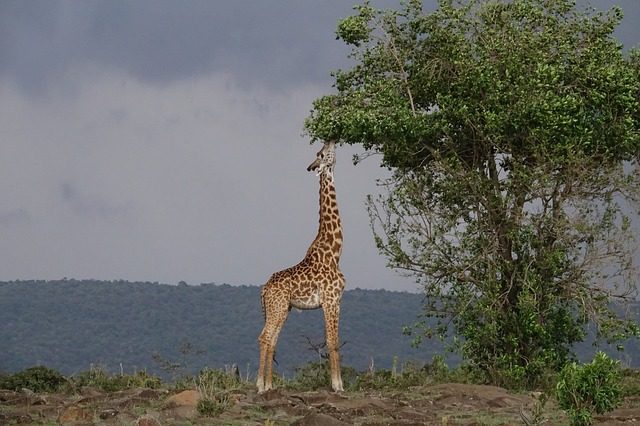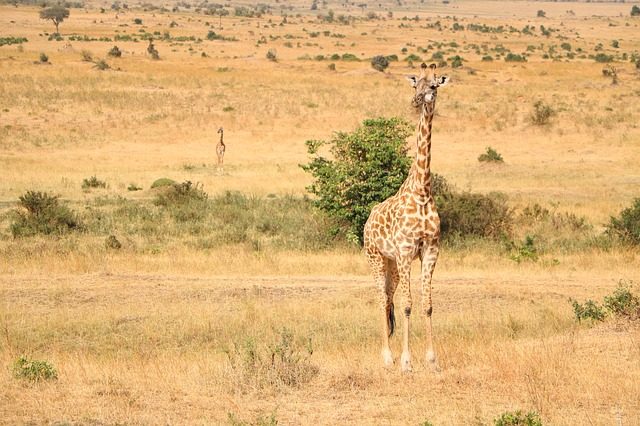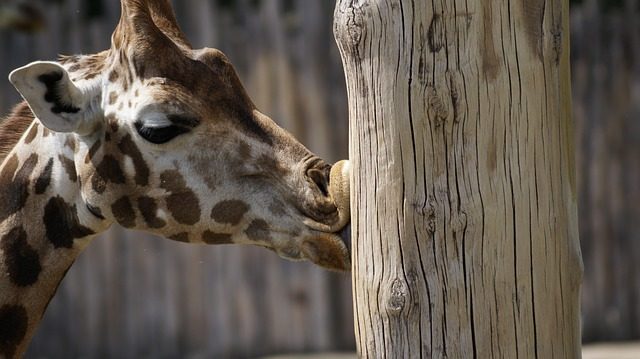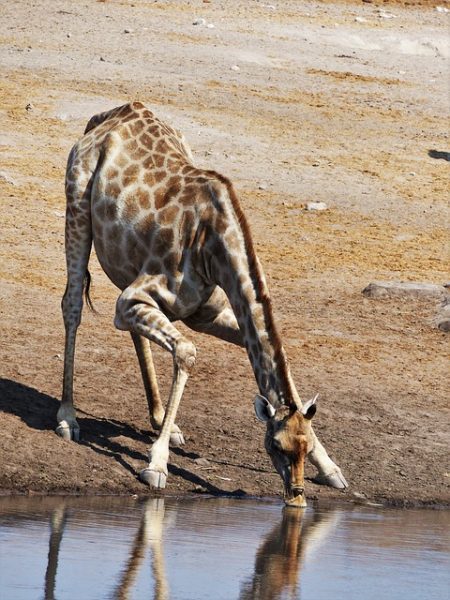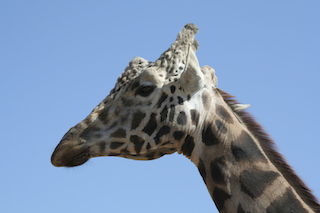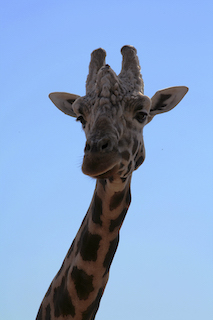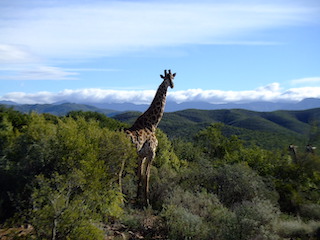Daily Lives Of Giraffes In Kenya
The giraffe is the most iconic and awe-inspiring creatures and the tallest mammal on earth. Both ancient and modern cultures revered it and described it as being magnificent in appearance. But they are weird too, with their long necks and legs, large eyes and long lashes, ambling gait and calm demeanor as well as striking coat pattern. They play a unique role in the ecosystem by eating leaves too high for use by other animals. Giraffes spot the predators before any other animals because of their height, and then they warn the others about the danger through their soundless communication method.
Inaudible communication style
Giraffes bellow, hiss, snort and make flute-like sounds and low pitch noises beyond people’s range to warn others of dangers. Their communication is very private, open only to their members and closed to human beings. Hence, most people think that giraffes are the quietest animals in the world and that they do not produce sounds. But this is untrue. They occasionally do make some basic sounds. The reason people believed that they did not make sounds was that most of their communication are at frequencies that are lower than the human capability. Surprisingly for a quiet animal, the giraffe is extremely popular.
Bush dining etiquette
The almost mythical height and unusual appearance of giraffes are animal lovers’ favorite, which has made them permanent fixtures in zoos all around the world. Captive giraffes never get to suckle. But they need their mothers from the time they are born. So, they instinctively try to lick various objects frequently. Therefore, even while in captivity they have proved their social nature. And in the wild, their eating habits are even more fascinating.
Ruminating digestive system
Giraffes digest their food by the process of rumination. They have a four-chambered stomach. The food initially goes to the first chamber where the microorganisms, which break down the cellulose into carbohydrates, partially digest it. The animal then regurgitates the food, chews it in its mouth and sends it back into the stomach to be absorbed completely. The microorganisms themselves are eaten too, providing nutrients and proteins, but not before they reproduce to a new generation so that the relationship can continue. That way both sides receive some benefit out of this symbiotic relationship. The microorganisms get a place to live, and the giraffe gets help with its digestion. And the way they obtain phosphorous and calcium supplements, two critical minerals essential for healthy bones, is by chewing on whole bones, or rather, gnawing on it.
Eating in tongue
The giraffe’s 50 centimeters long prehensile tongue is darkly colored – often blue or black – which protects them from getting sunburnt during daily sun exposure. They stick them out that much. They use it like an elephant uses its trunk to maneuver around the long acacia tree thorns to reach the leaves and then yank it into its mouth. The tongue has bristly hair that helps them with eating the thorns. They also have sticky, thick saliva that coats the thorns they might swallow. The lips and even the insides of the mouth are completely covered with finger-like, hard papillae to protect it from nasty gashes from the thorns of the acacia trees. The snake-like tongue not only grasps things but is also especially useful for personal grooming, such as cleaning its ears and picking its nose.
Problematic drinking mannerism
For an animal that spends at least 20 hours a day eating, when it comes to drinking water, giraffes only need to drink once every couple of days because their digestive system can obtain all the water from their plant-based diet. In this regard, they share the same trait as camels who are distant relatives. However, when water is plentiful, they drink as much as they can so that they can survive for extended periods of time without it when it is not available in arid areas. Moreover, giraffes never sweat or pant, like most mammals do. Their coat enables them to keep fresh and conserves water.
Inbuilt thermoregulation patches
A giraffe’s coat assists with thermoregulation. Underneath each patch, there is a very sophisticated blood vessel system that helps in controlling the body heat. Around each patch, there is a large blood vessel that divides into smaller vessels underneath it. The animal can send blood through the small branches into the center to release heat. Therefore, each spot acts as a thermal door to release body heat. In other words, their body temperature fluctuates according to the surrounding temperature. While its unique biology enables the giraffe to go on without being thirsty for a lengthy time frame, it poses some problems when they occasionally do drink water that never affects other animals.
Height is disadvantageous
Although a giraffe’s neck is long, ironically, it is too short to reach the waterhole. Therefore, it has to spread its front legs or crane their neck in an awkward position or even kneel to stoop low enough to reach the ground to drink water, all of which leaves them clumsy and vulnerable to crocodiles. In fact, drinking is the most dangerous times for the animal. Moreover, the height makes the process even more challenging. So, the fact that they can survive without drinking water for several days comes as a blessing in disguise. Consequently, more often than not, giraffes are always found far away from waterholes.
Big hearted animal
When the giraffe lowers its head to drink, the elastic-walled vessels and valves in the circulatory system dilate and constrict to manage the flow of the blood and prevent it from flowing back. This pumping of blood all over its body requires substantial power. That is why the giraffe has the heaviest heart of any land mammal. This cardiovascular system even inspired astronauts to design space suits for its explorers in a way that would keep their legs healthy enough when they return to earth.
Not enough sleep
All of the activities giraffes engage in are done while standing. And that includes sleeping. If they do settle into the ground, it would be just for a very quick nap. In a 24-hour cycle, they only need 30 minutes of sleep. They often achieve that in short naps that may last only two minutes at a time. Perhaps this is because when giraffes lie down, it takes a lot of time, leaving them vulnerable to predator attacks. It has led to the myth that if they lie down, they will die. Therefore, they have evolved to be one of the most efficient sleepers, rarely sleeping longer than two hours. On those rare occasions when they sit down, they use their butts as pillows.
Range of distribution
The giraffe’s social nature is inherent not only in its ability to warn of danger but also in their communicating, eating, drinking and sleeping habits. However, anthropogenic activities have nearly eliminated this even-toed ungulate mammal from its former range; but it remains common in Botswana, Zimbabwe, Namibia and Niger in southern Africa as well as Somalia and Kenya in eastern Africa.
5 Frequently Asked Questions About Giraffe Habits
To receive a colourful digibook about giraffe with videos, images and text, please fill out the following form or simply email us on safaris@safari-center.com

